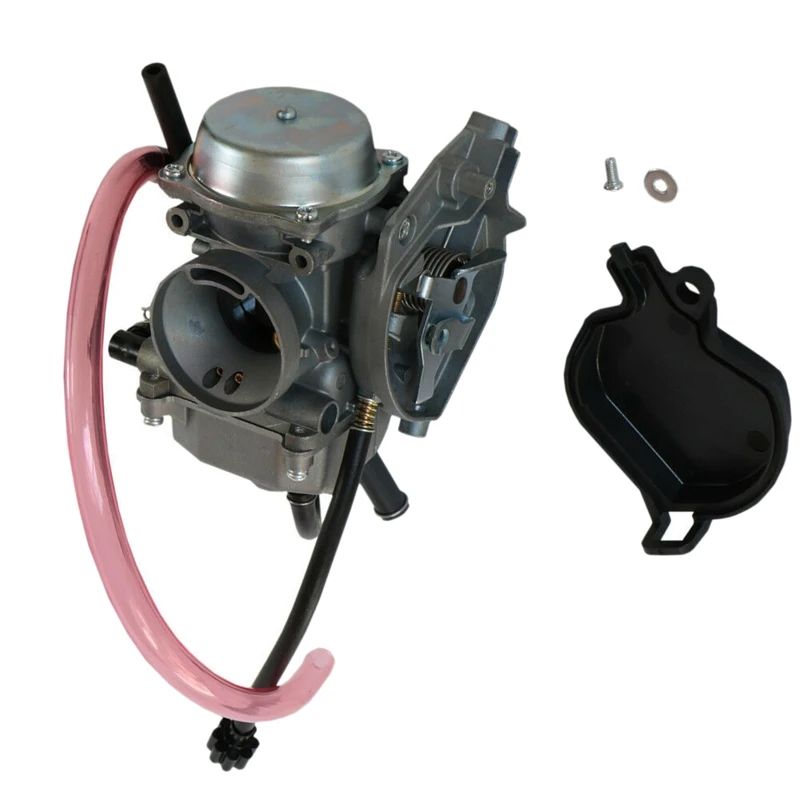If your ATV engine is not getting enough fuel, it won’t run properly. You’ll notice it bogging down and just not having the power it used too. If you’re not getting fuel to the engine at all, it won’t even start for you.
The most common reason an ATV engine is not getting fuel usually has to do with the carburetor. Either a stuck needle valve or a loose or cracked vacuum hose are the most common issues. Don’t worry, there are pretty straight forward things you can do to check where your problem is.
There are a few different reasons you may not be getting fuel to your engine. It’s not that hard to check the parts to see if their working properly. I recommend going step by step checking one thing at a time, eliminating possible issues as you go.
If you have a fuel injected engine, you can skip this next part and jump straight to the fuel injectors, fuel pump, and compression check sections.
I would first check the carburetor to help narrow down where you should start your investigation. All you need to do is spray a little carb cleaner or ether down the carb and see if your engine will fire up with that. Or you could pour a little gas in the carb and try to start it up.
If it does start, and then dies right away, at least we know now it’s a problem getting fuel to the carb. We know that now because, when the carb has fuel, the engine will run. You should check to make sure fuel is getting to the carb now.
If it still doesn’t start at all, you may have a problem getting fuel from the carb to the engine. That is telling us the problem is further down the line. It could be an issue with compression if that’s the case.The engine doesn’t have enough compression to pull in the fuel it needs and stay running. I will go over how to do a compression check later in this article.
Another check to do with the carburetor is to adjust the idle mixture screw.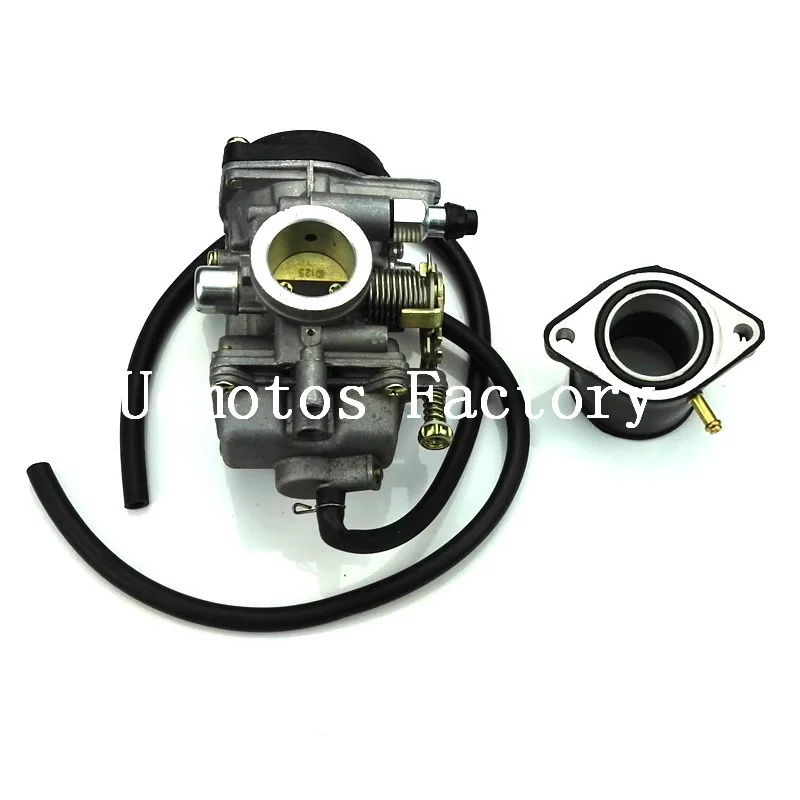 I know it sounds too good to be true, but a lot of times this adjustment isn’t set right so the engine isn’t getting the right air/fuel mixture to run properly.
I know it sounds too good to be true, but a lot of times this adjustment isn’t set right so the engine isn’t getting the right air/fuel mixture to run properly.
Ok, you sprayed something into the carb and the engine started up for a few seconds. Great, now we need to make sure the carb is getting the fuel it needs for the engine to run. Disconnect the fuel line going into the carb and put that end into a bucket or something to catch the fuel.
You may need to take out any spark plug, or just unplug them, just in case. And try to start the engine and look to see if fuel is coming out of that fuel line. If there is, then you have no problems getting fuel from the gas tank and it is probably a needle valve or float problem.
If there’s no fuel coming from the tank down that fuel line, then you’re problem may be an issue with the fuel pump, if you have one, or an obstruction in the fuel line or shut off valve. I will go over how to diagnose the fuel pump later in this article.
If the needle valve in your carb is corroded, it will not allow fuel to flow to the engine properly. Same thing will happen if your float is getting stuck. You’re going to need to clean the carburetor and possibly replace those parts if they’ve gone bad.
First remove the float bowl to gain access to the carburetor insides. Then you can remove the pin holding the float in place. Before you do that, you can try moving the float up and down with your hands, the float should move freely and have no resistance feeling when moving it.
The needle valve will be attached to the under side of the float, here is a picture of what you’re looking for. You can try cleaning the needle valve using carb cleaner. Just soak the thing and let it sit in carb cleaner for a few hours.
If that didn’t help, or you just don’t want to do it, no big deal. Needle valve are pretty cheap online. Here’s an example of a Carburetor Float Valve Needle
on Amazon to give you an idea of what you’re looking for.
You can also replace the float if you want to, usually you don’t have to but i would give it a good cleaning. Double check all the seals and everything since you’ve got the carb open, and clean out everything really good.
Remove Needle Valve SealCheck the bowl gasket, if this was bad, you would have noticed the carb leaking fuel before. To check and replace the valve seal, you’ll need a pick or something to pull it from the carburetor. I’ve used a sheet rock screw before. Just thread the screw in a little and pull out the seal.
Check out the picture for an idea of what you’re looking at. Once you’ve removed the old seal, insert the new one and make sure it’s seated all the way.
You can do that with a metal punch or something, just make sure you don’t hit too hard because you could break the aluminum frame of the carb. Reassemble with new needle valve and you should be good to go.
Fuel injectors can get gummed up after a while if they aren’t cleaned regularly. The end of the fuel injector has small holes in it that the fuel passes through, creating a spray that enters the cylinder. If those holes get gummed up, the spray will be off, and you’re engine won’t run.
The end of the fuel injector has small holes in it that the fuel passes through, creating a spray that enters the cylinder. If those holes get gummed up, the spray will be off, and you’re engine won’t run.
If you think it could be a problem with your fuel injector, I’d recommend trying to clean them first before buying new ones because they can be pretty expensive. First, you’ll have to remove the fuel lines that hook to the fuel injectors.
You could always remove the fuel injectors completely and let them soak in some fuel injector cleaner. I use this B-12 Chemtool Thru-Rail Fuel Injector Cleaner but you can use any carb cleaner / fuel injector cleaner you want to.
If you don’t want to remove the fuel injectors completely you can try another method. You will still need to remove the fuel lines and let all the gas drain out of them. You will then fill the fuel line with fuel injector cleaner, and then reconnect the fuel lines.
Try starting the engine for at least 20 seconds.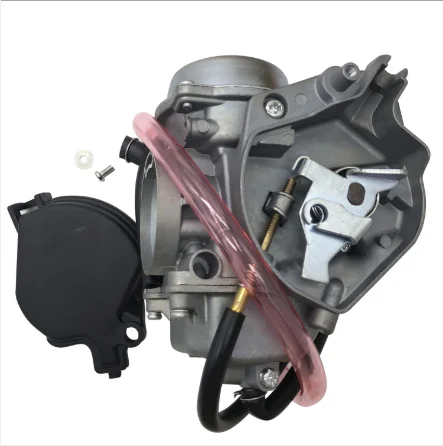 If it does start, don’t let it run for longer than 20 seconds. Then you want to sit and wait about 10 minutes or so. You need to give the fuel injector cleaner time to do its work. Repeat the process five more times, but only try to start for 10 seconds, and then let sit for ten minutes.
If it does start, don’t let it run for longer than 20 seconds. Then you want to sit and wait about 10 minutes or so. You need to give the fuel injector cleaner time to do its work. Repeat the process five more times, but only try to start for 10 seconds, and then let sit for ten minutes.
I know it’s not the official way to clean the injectors, but I’ve seen it work, and it can save you from all the work of removing the injectors. Once you get the quad running, you’re going to want to add a fuel additive to your gas to keep the injectors clean.
You should be doing this at least once a year anyway. I do it with my maintenance checks before spring begins every year. I usually just add some of this Gumout Complete Fuel System Cleaner to the gas tank before I start it up for the season.
I would say to try blowing air through the fuel pump to make sure fuel will be able to flow freely through it. But if you have a vacuum operated pump, you won’t be able to do that.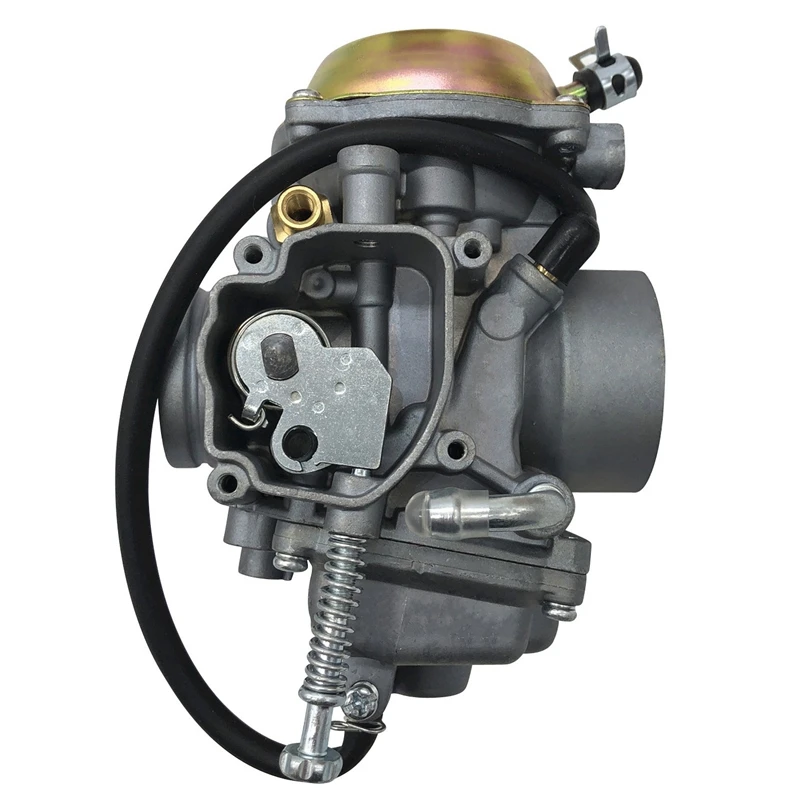 There are diaphragms in there that could get damaged.
There are diaphragms in there that could get damaged.
To make sure you’re vacuum operated fuel pump is working correctly, pull the vacuum line to the fuel pump off and crank the engine. You should feel a good amount of suction at the mouth of the carb.
The engine crates a vacuum pulse to the fuel pump, which in turn creates an amount of pressure that pushes fuel into the carburetor. If you’re not getting good suction, try replacing the diaphragms in your fuel pump and make sure your vacuum lines aren’t cracked.
If you can, try cleaning the fuel line out and replacing the fuel filter to make sure you’re getting fuel to the carburetor. Inspect the fuel pump for wear and loose or cracked hoses. If there is no vacuum in the hose, you’re carb won’t get any fuel. This is most likely caused by a crack in the vacuum fuel lines or a bad fuel pump.
You may find it easier to just replace the fuel pump all together since they aren’t usually very expensive.
The compression check is pretty straight forward, you’re trying to see if you’re engine can handle the right compression to run properly.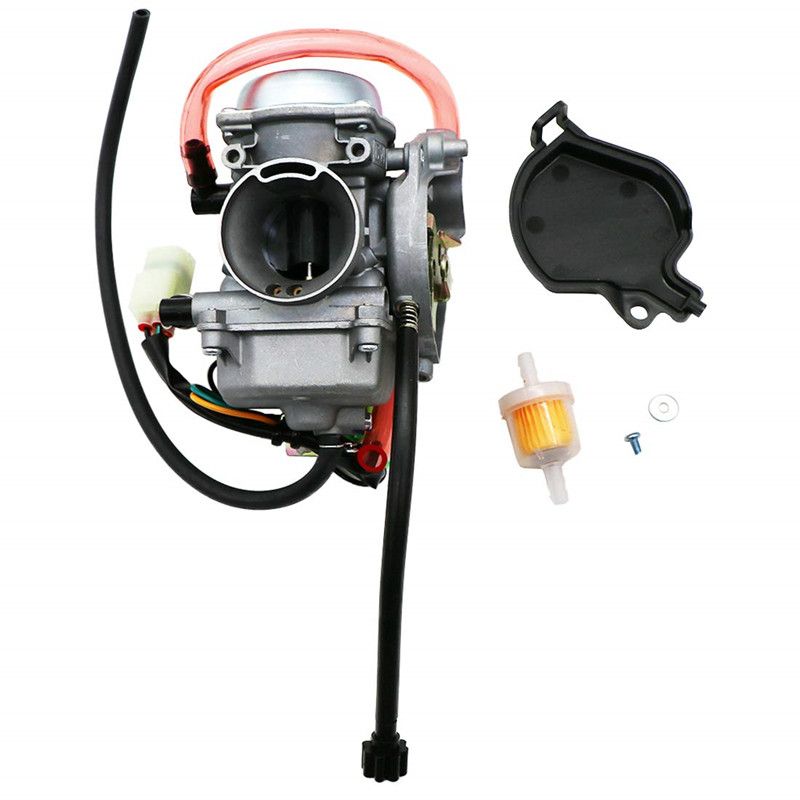 Without compression, you won’t get fuel and your ATV won’t start.
Without compression, you won’t get fuel and your ATV won’t start.
The steps are pretty simple if you have a compression tester kit. Basically, you remove the spark plug, hook up the compression tester and run the test. You just have to make sure your engine is at the down stroke in the compression cycle.
I go over this process in a lot more detail and explain step by step how to perform this test in my article, Top 7 Reasons An ATV Smells Like Burning Oil. If you weren’t getting good compression, but enough that the quad still ran, you would leak oil into the cylinder. Go to that article and scroll down to the leak down test section for a step by step guide on checking for compression.
Sharing is caring!
Over time, car carburetors can collect a lot of dust, dirt, debris, grime, and grease. This can cause blockages or clogs that prevent the needed combo of fuel and air from reaching the engine, which, in turn, halts the car.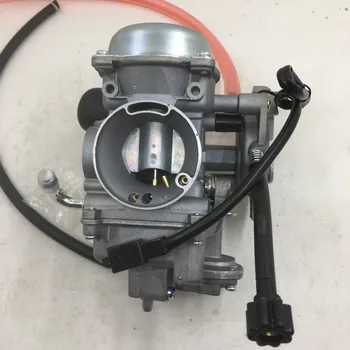
Less severe symptoms are sluggish performance and acceleration, reduced mileage, as well as overheating. If you drive with diesel, you may also encounter black smoke from the exhaust pipe.
All of these are situations that you want to avoid as a car owner, and to do that, it is necessary to know how to clean a carburetor without removing it. Even though seeking professional service is an option, it is not necessarily the most cost-effective and time-saving solution.
So, it is best if you can learn to clean the carburetor without removing it on your own at home. Understanding this, we have put together an article with all the necessary materials and steps that you have to be aware of.
Briefly, the procedure to clean carb without removing it is as follows:
 Then, wait for it to settle and work its magic
Then, wait for it to settle and work its magicKeep reading for the details!
Table of Contents
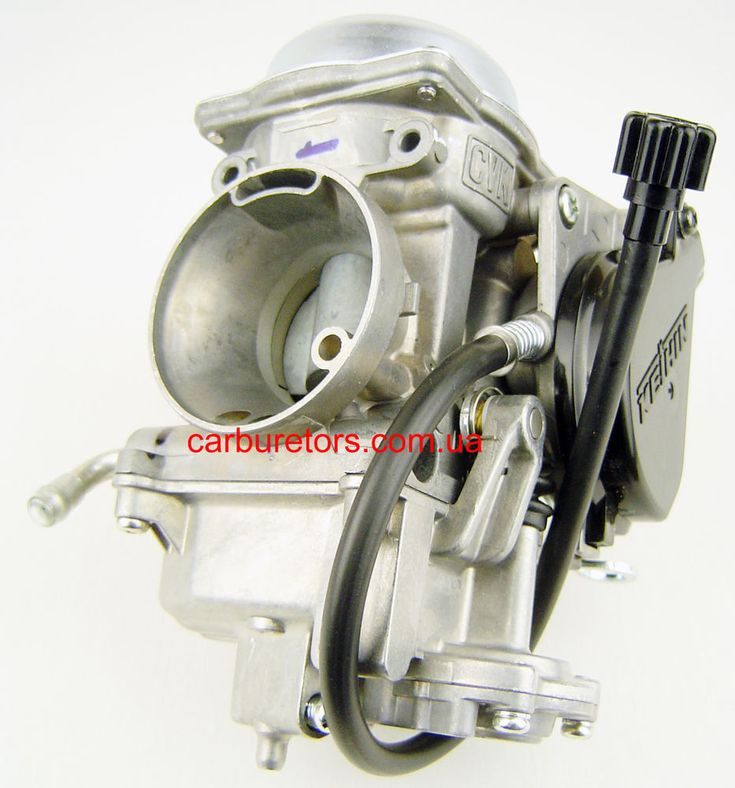 Then, wait for it to settle and work its magic
Then, wait for it to settle and work its magicBefore you begin to clean a car carburetor without removing it, you need to gather the following materials:
Although most of the materials on this list are not tricky to choose, you must be extra attentive when purchasing the carburetor cleaner.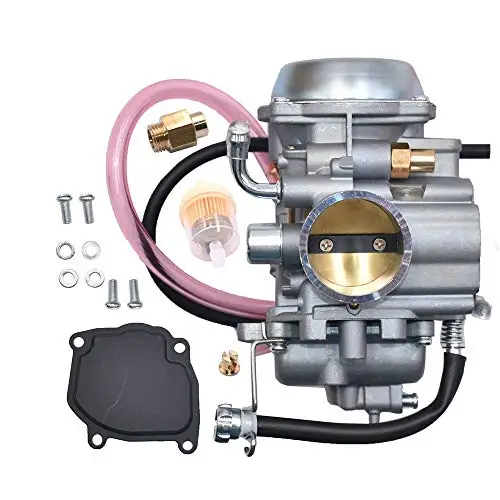 This is sometimes also referred to as a carburetor and choke cleaner. It is best to weigh in many factors before you decide to buy a particular product, including but not limited to: formula, compatibility, ease of use, brand, and price. Your product of choice should excellently converge all these criteria.
This is sometimes also referred to as a carburetor and choke cleaner. It is best to weigh in many factors before you decide to buy a particular product, including but not limited to: formula, compatibility, ease of use, brand, and price. Your product of choice should excellently converge all these criteria.
Reliable ones that you can consider if you are not yet sure where to start: Gumout 800002231 Carb and Choke Cleaner, CRC Carb and Choke Cleaner, Johnsen’s 4641NC Non-VOC Compliant Carburetor Cleaner Spray, and B-12 CHEMTOOL Carburetor/Choke Cleaner.
Once you have everything and are good to go, dive straight into the next section, listing and elaborating the necessary steps.
The Best Way to Clean a Carburetor (8 Simple Steps)Step 1: Put on protective gear, switch off the engine, and remove the air filter’s housing along with any hoses and linkages and the bottom bowlFirst things first, put on a pair of safety gloves and goggles.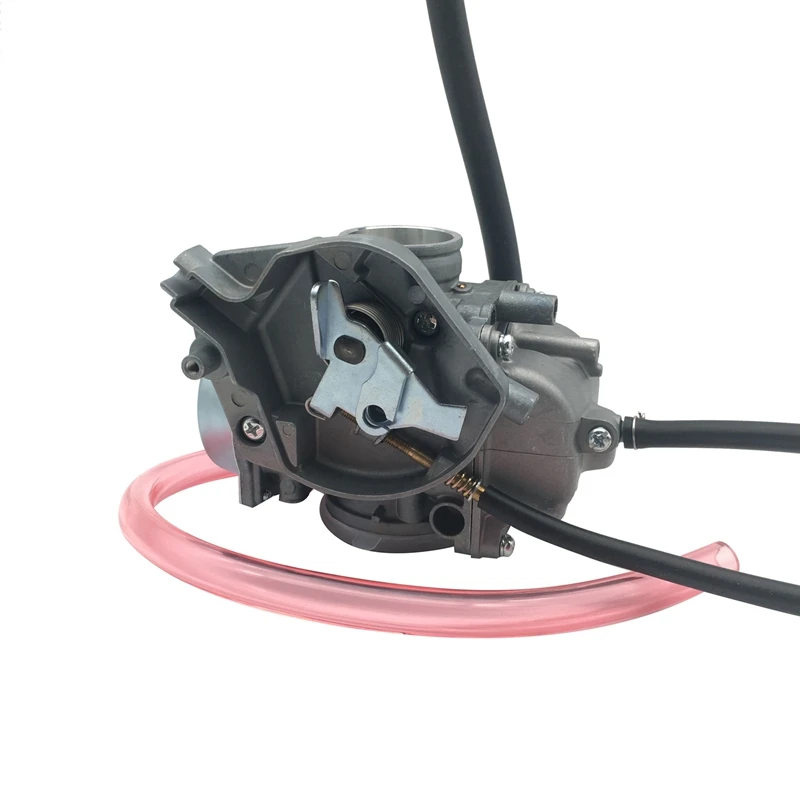 Wear a face mask, then switch off the engine. Check that the spark plug is safely disconnected. Next, locate the air filter and its housing. Remove it to gain access into the carburetor.
Wear a face mask, then switch off the engine. Check that the spark plug is safely disconnected. Next, locate the air filter and its housing. Remove it to gain access into the carburetor.
You may have to remove all the surrounding hoses and linkages as well. Use hand tools if you need to loosen any bolts and nuts. There is a bowl at the bottom of the carburetor; take it off too.
Top Tip: At this point, it is very important to ensure that the petcock is closed. Otherwise, gas will leak.
Lay out a few napkins or paper towels around the base of the carburetor to collect any gas drips. Wipe any excess. You can move onto the next step after getting a clear passageway to the dirty car carburetor.
Step 2: Vacuum away any loose dirt, dust, debris, grime, and great on the surface with a handheld and cordless vacuumUse a small, handheld and cordless vacuum to get rid of any surface-level filth. Set the vacuum to a low or moderate setting and run it across the compartment carefully.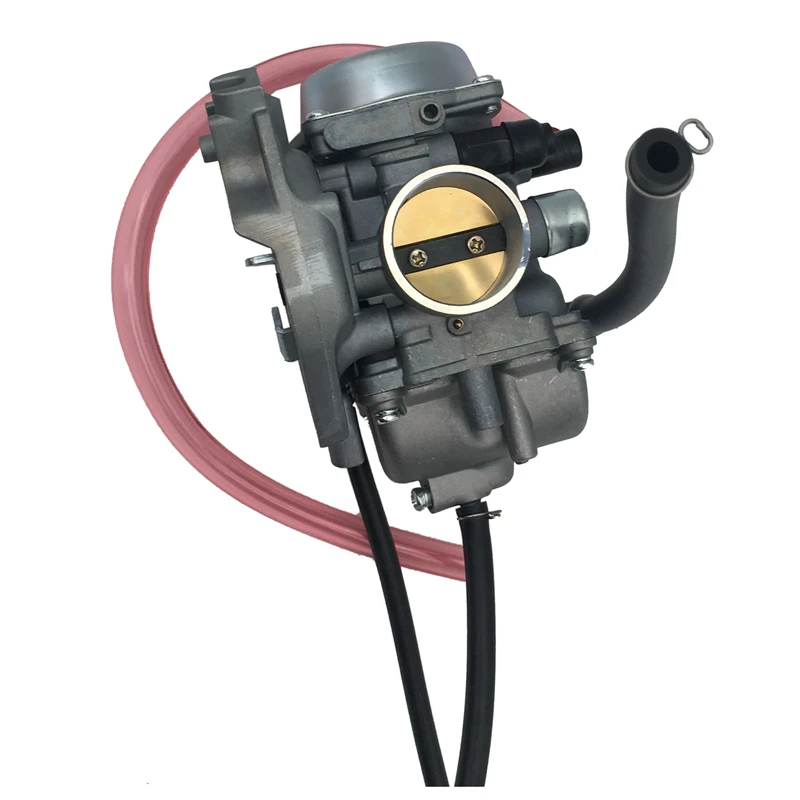 Take your time and do a thorough job. The better you complete this step, the less work you have later.
Take your time and do a thorough job. The better you complete this step, the less work you have later.
Replace the layer of napkins with a layer of slightly thicker rags or cloths. This will catch any runoffs and prevent them from hurting surfaces, especially ones coated with paint.
Step 4: Apply the carburetor and choke cleaner in thin, even coats. Then, wait for it to settle and work its magicThen, prepare your carburetor and choke cleaner. Grip it properly and hold it at about half a palm’s length from the outershield to clean the outboard carburetor without removing it. Give it a good shake, and position your finger on the nozzle, ready to press down to spritz.
Make a thin and even coat; do not miss the secondary moving points and connections, particularly the linkage of the throttle area. Now, wait for the cleaning solution to work its magic. Be patient! It will take at least a few minutes.
Be patient! It will take at least a few minutes.
Use a fresh microfiber towel to wipe the filth away along with the cleaning solution. If there are solid buildups or sludges, use a stiff-bristle brush to work it out. Alternatively, you can use a wire brush. Apply more of the carburetor cleaner as needed.
Note: It is completely normal to repeat steps three and four several times. Continue to do so until the carburetor is clearly clean. Be attentive and check all of the openings closely.
Step 6: Wipe the carburetor down with a fresh, dry towel and double-check that it is dried completelyNow, give the carburetor another wipe-down with another dry towel. Make sure that there is no excess moisture left. Leave it for an hour or two to dry completely. To verify, the criterion is that it is not damp-to-touch.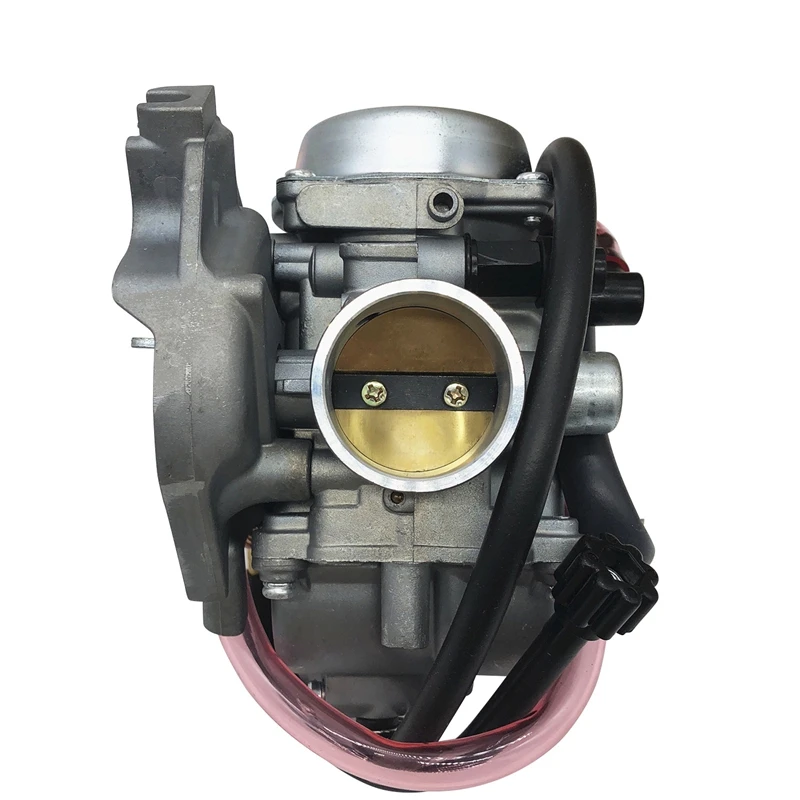
Remove the rags and cloths you have laid out at the base of the carburetor, as well as any other hand tools you were using. Then, start the engine to test its performance. If the results are better compared to before you started to clean, you are good to go!
Otherwise, you can repeat the procedure. In case your engine is still not as you wanted, consider cleaning the carburetor by actually removing it. It is quite a tedious task, especially when you have to rebuild it in the end, but unfortunately, it may be your only solution.
Check out this site to learn how to clean a car carburetor without removing it.
Step 8: Return the air filter housing, bottom bowl, as well as hoses and linkages to their original setupTo complete, put the air filter housing back in and return everything that you have disconnected temporarily on the first step.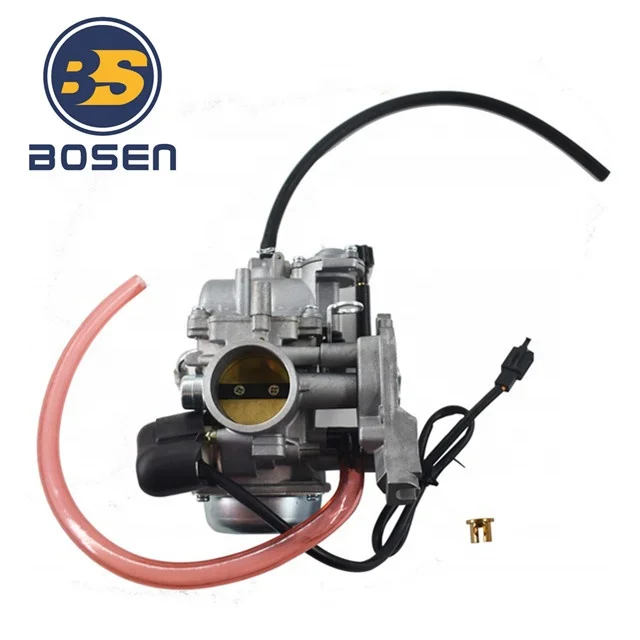
Bravo! You now know everything there is to know to clean a carburetor without taking it apart. Remember, it is important to clean your carburetor once in a while. You do not have to wait until it is showing symptoms to actually go ahead and clean it. It is always better to be proactive when it comes to car care and maintenance!
ConclusionLearning how to clean a carburetor without removing it is difficult but not impossible as long as you prepare the appropriate materials and take the right steps.
Now that you have read through everything you need to know about cleaning carburetors, just apply accordingly and say goodbye to costly professional services!
Afterward, please do not forget to return and share your experience with us as well as other readers in the comments..jpg?x-oss-process=image/auto-orient,1/quality,q_70/resize,m_mfit,w_350,h_350) This is especially important if you have gotten insights that can further our article’s content. You are welcome to share the article with anyone you think will benefit from or appreciate the content as well!
This is especially important if you have gotten insights that can further our article’s content. You are welcome to share the article with anyone you think will benefit from or appreciate the content as well!
In order for the ATV to work like a clock, the rider needs to regularly carry out a complete maintenance of the equipment. And a key element of maintenance is ATV carburetor adjustment. Over time, the system starts to work incorrectly, which increases fuel consumption, worsens dynamics and other problems appear. So how do you adjust an ATV carburetor?
The operation and life of the engine directly depends on the quality of the fuel mixture. The carburetor is responsible for the preparation of the composition, but after prolonged use of the equipment, the settings “go astray”.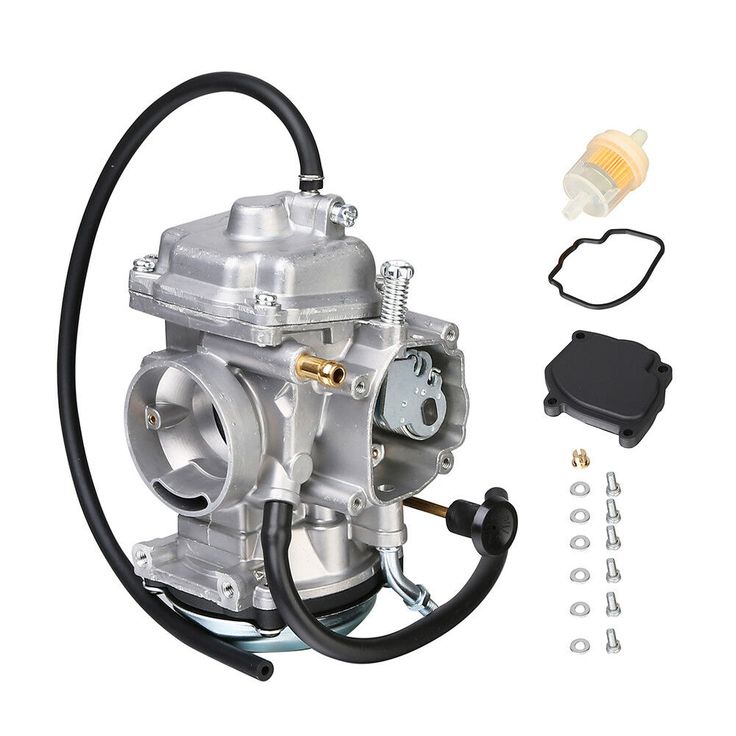 This results in:
This results in:
Many riders who decide to buy an inexpensive ATV simply do not spare the technique and ignore this procedure.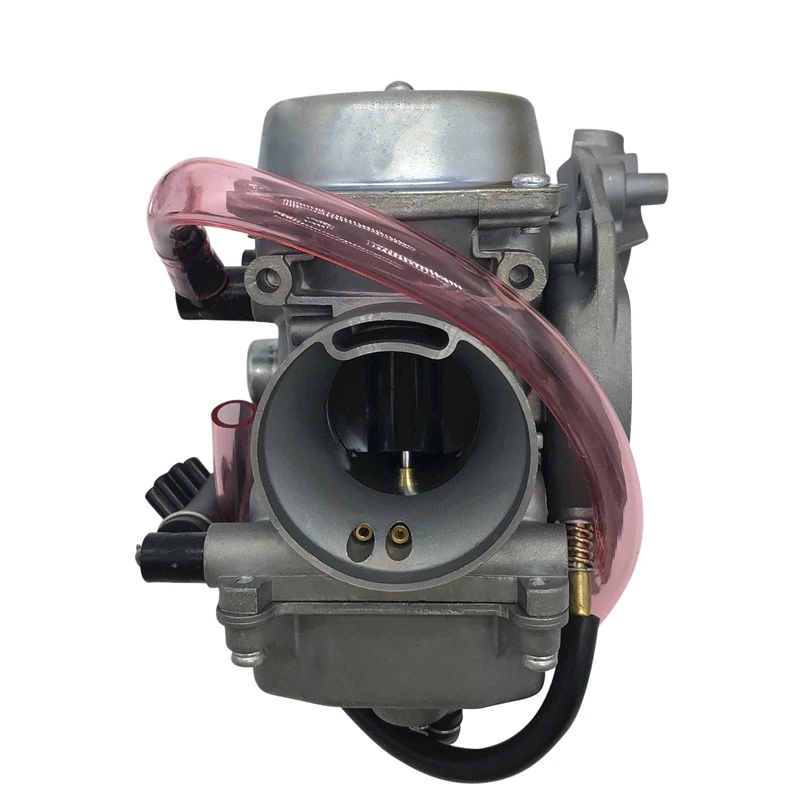 But even if you plan to change your device in 1.5-2 years, adjustment is needed. The reason for this is increased fuel consumption. A quad with an untuned carburetor "eats" 30-40% more gasoline, and these are tangible costs.
But even if you plan to change your device in 1.5-2 years, adjustment is needed. The reason for this is increased fuel consumption. A quad with an untuned carburetor "eats" 30-40% more gasoline, and these are tangible costs.
So how do you adjust the carburetor on a Chinese ATV? For this you need:
However, it is important to remember that all adjustments are made only with a "clean" carburettor. This means that the rider needs to remove all the dirt from the node and flush the system to remove condensation and sediment from it.
Note: Just before adjusting, the engine must be warmed up to operating temperature.
To set the carburetor idle speed, the float chamber must first be cleared of fuel.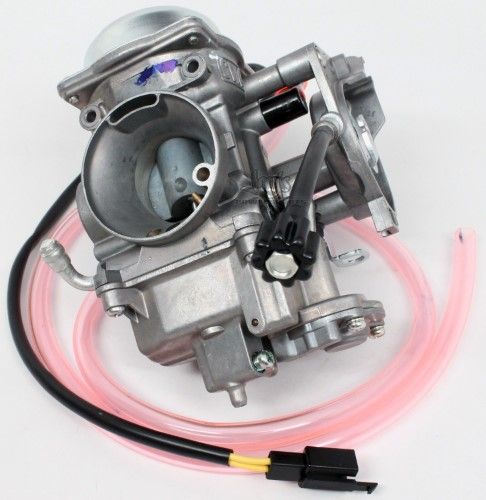 To do this, start the ATV, close the fuel cock and wait until the machine stalls (5-10 minutes). To speed up the process, you can take a little ride on the quadric. Of course, gasoline can be drained, but in any case you will have to warm up the device, so the first method of "removing" gasoline is more effective.
To do this, start the ATV, close the fuel cock and wait until the machine stalls (5-10 minutes). To speed up the process, you can take a little ride on the quadric. Of course, gasoline can be drained, but in any case you will have to warm up the device, so the first method of "removing" gasoline is more effective.
Then:
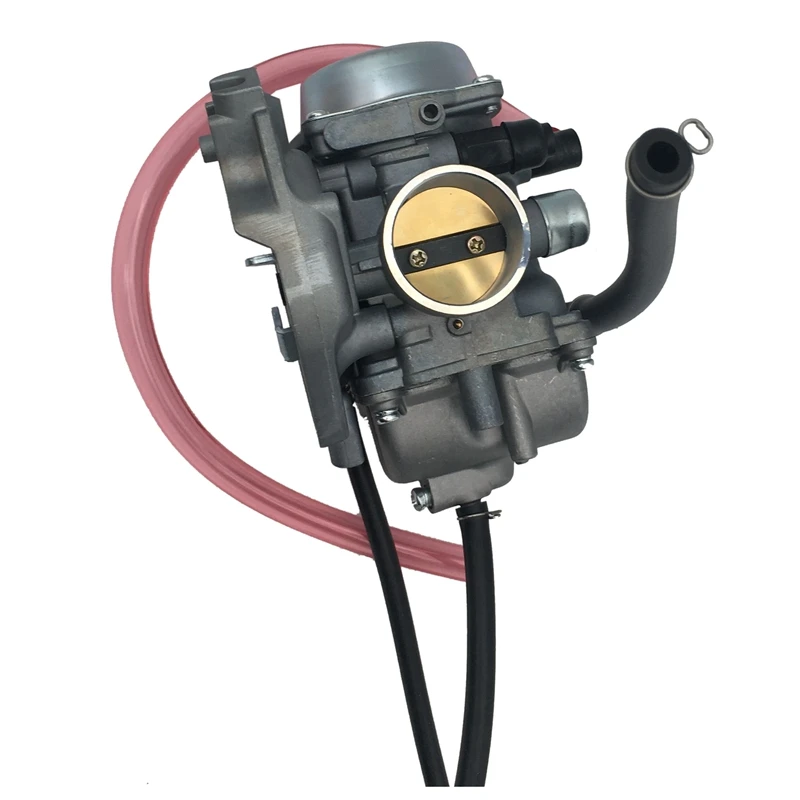 Focus on sound. The engine should run smoothly, without strain.
Focus on sound. The engine should run smoothly, without strain. Read the manual before adjusting the carburetor on a 125cc ATV to be sure. Remember that the location of the bolts is different in different devices, so read the documentation in advance.
To evaluate the quality of the fuel composition, make a test run. After that, unscrew the candle, and evaluate its condition. If it is:

Also look out for these “symptoms”: damaged tip (electrode failure), oil deposits (damage to rings and caps), chips and inclusions (sign of motor failure).
To adjust the mixture you need to twist the needle cover and pull it out. To get the needle, pull out the cable. After that, move the ring in the required direction (lower - more air, but less fuel and vice versa). Then start the engine and make sure it doesn't stall.
The last step in adjusting the 125cc ATV carburetor is adjusting the petrol level. To do this, you need:
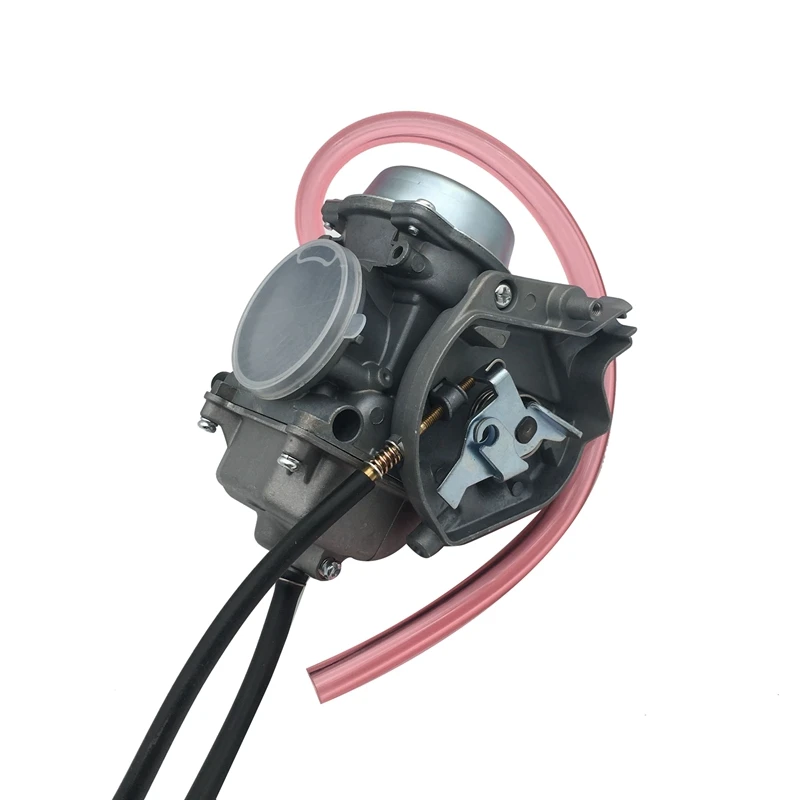
Note: Adjust as carefully as possible as system components are very fragile. Ideally, carburetor tuning should be done by a specialist.
06/16/2020 21374
How to adjust the carburetor on an ATV? What to pay attention to? What are the signs of misuse of the device? About this today in our article. Using the proposed instructions, you will be able to set up the carburetor step by step without the help of specialists.
For stable operation of the ATV, it is necessary that the engine receives the optimal amount of combustible mixture corresponding to its rev range. Otherwise, the following problems may occur:
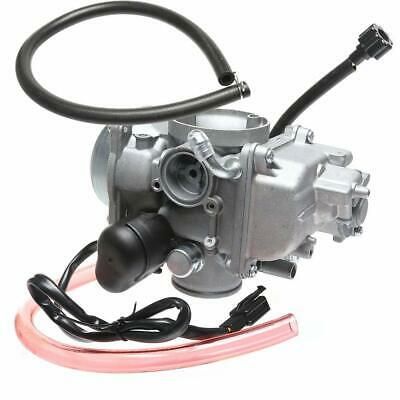
What needs to be applied in this case:
Important! Carry out tuning only when the carburetor is cleaned outside and inside, as well as when the engine is warmed up to operating temperature.
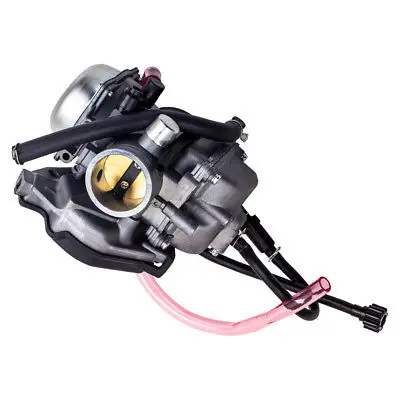
Note. The location of the bolts on each carburetor model may vary, so read the instructions that came with your machine.
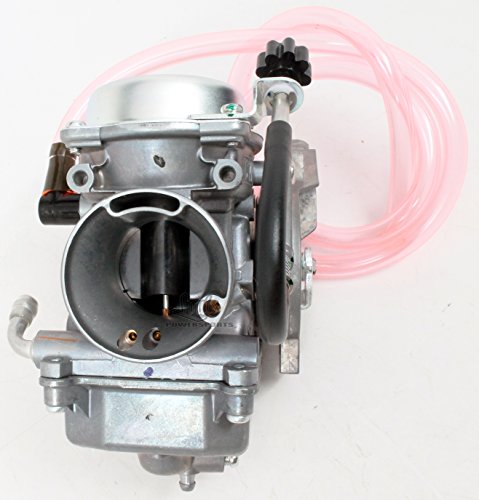
1. Start the ATV and test ride. Wait until the engine has completely cooled down.
2. Check the condition of the spark plug. To do this, unscrew the cap and inspect the candle.
What to look for:
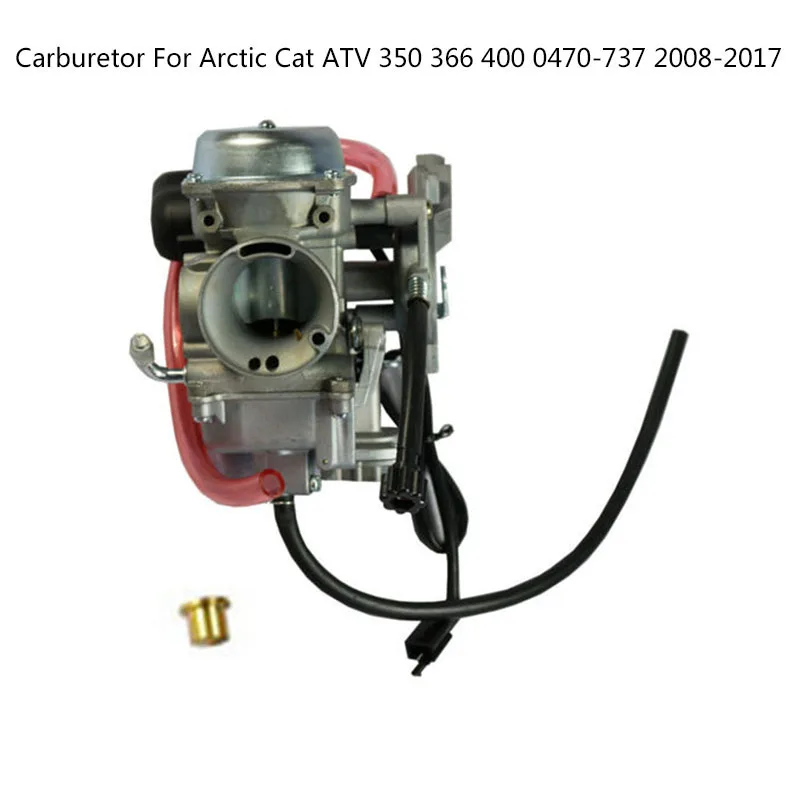
3. Unscrew the needle cover at the top of the carburetor. Pull the needle. This is the main element that regulates the supply of fuel to the combustion chamber, since the needle is connected to the gas trigger. When the trigger is pressed, the needle rises, slightly opening the hole for supplying the fuel mixture. This directly affects the growth of power and speed of the ATV.
4. Remove the cable, then press the needle to pull it out.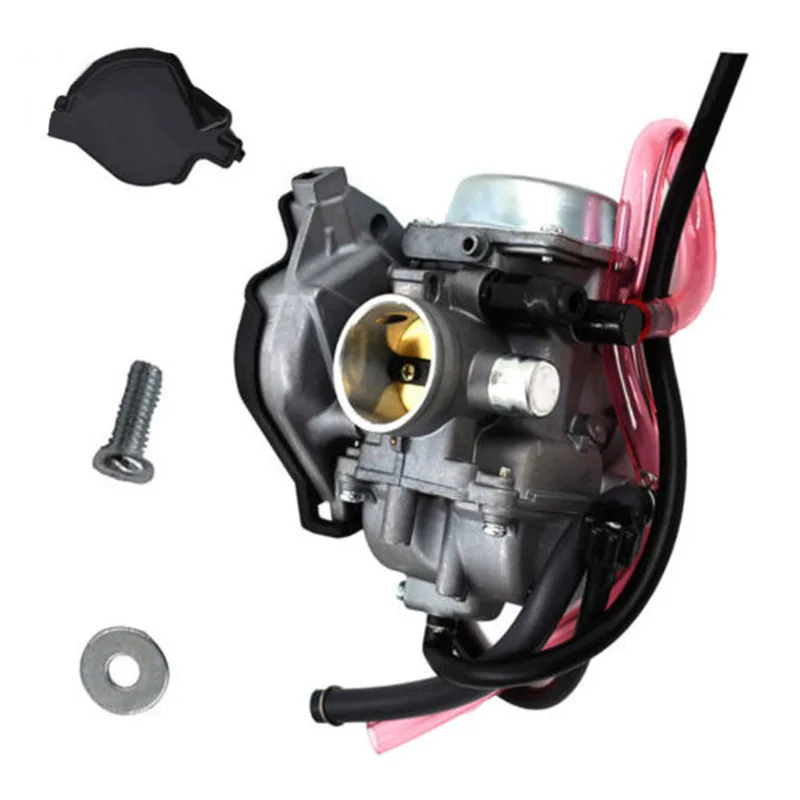 The needle has 5 grooves and a retaining ring. By default, it is set to medium. The lower the retaining ring is located, the higher the needle is raised, which means that a lot of gasoline and little air is supplied. Accordingly, the higher the ring - the less gasoline and more air.
The needle has 5 grooves and a retaining ring. By default, it is set to medium. The lower the retaining ring is located, the higher the needle is raised, which means that a lot of gasoline and little air is supplied. Accordingly, the higher the ring - the less gasoline and more air.
5. Reposition the circlip in the desired direction to optimize carburetor performance. Insert the needle into place.
6. Start the engine and press the throttle trigger. With proper adjustment, the engine should not stall from a sharp pressure.
And remember, you should resort to adjusting the needle only as a last resort, when adjusting the quality and quantity screw does not bring results.
The performance of a four-wheeler depends on the correct level of gasoline in the carburetor. An excessive amount will flood the candles, spill onto the ground and lead to unnecessary expenses. If there is too little fuel, the engine simply will not start.